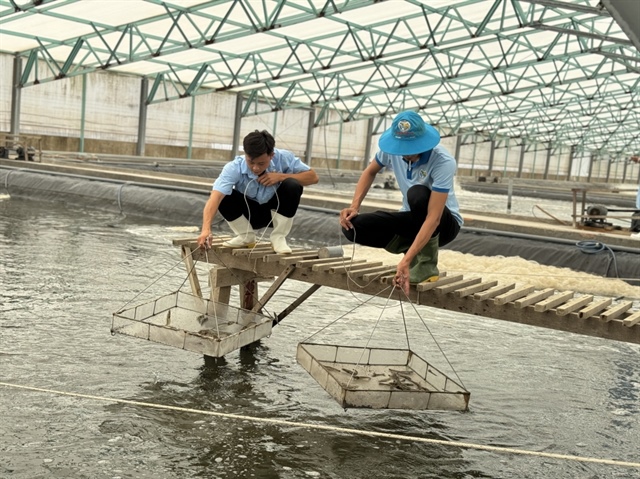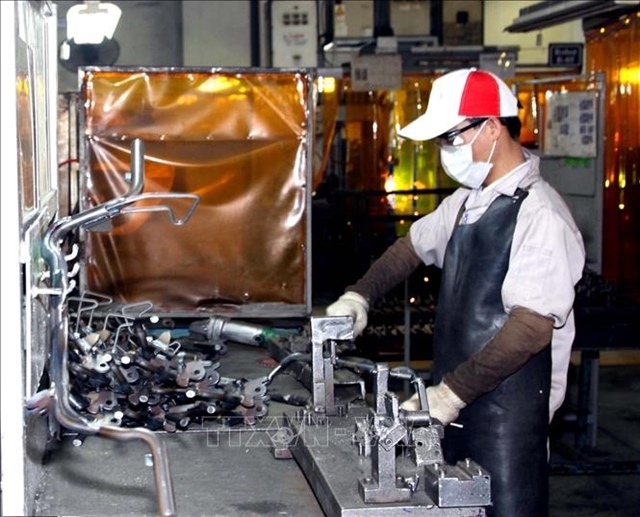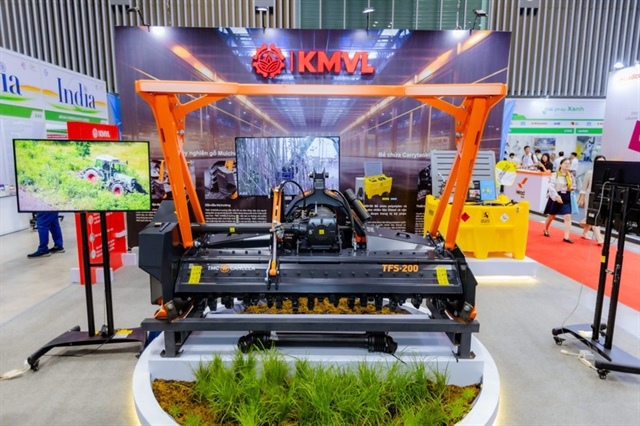Supply chain optimisation boosts garment firms' competitiveness
Supply chain optimisation boosts garment firms' competitiveness
Investing in logistics and applying lean management are considered two of the solutions to optimise the supply chain, helping domestic garment and textile firms to solve the issues related to warehousing operations to save costs and increase competitive capacity.
The concept of global supply chains is not unfamiliar to import and export enterprises in the context of the Vietnamese economy becoming a market economy and international integration during the past 30 years. However, most Vietnamese enterprises, especially garment and textile firms, only participate in secondary supply chains with low added-value.
According to Nguyen Van Nam, director of the Research Institute for Brand and Competition Strategy, the outstanding disadvantages of the Vietnamese supply chain are its backwardness and lack of consistency.
At present, only 21 per cent of small- and medium-d enterprises are part of the global supply chain, while the figure is 30 per cent in Thailand and 46 per cent in Malaysia. The logistics expenses of domestic enterprises is double or triple of those in a number of countries with similar economic conditions to Vietnam.
The expanded costs on logistics have hugely affected the segments of garment and textile, footwear, and electronics that employ a large number of labourers and run huge exports and imports, are hugely dependent on input, and have produce low added value.
According to Vietnam Textile and Apparel Association (Vitas), as of the end of 2016, logistics costs accounted for one-third of selling prices.
To resolve the issue, many firms apply technology to better manage warehousing as well as optimise their supply chains. Accordingly, commonly used technologies are backing up the bills and contracts, and automatically transferring documents between firms.
Pham Kien Cuong, business development vice manager at Vinafco JSC, a logistics firm established in 1987, said that applying technologies to the supply chain will save 5 per cent of the firm’s costs, expenses will be narrowed to 0 per cent, and personnel will be reduced by 25-30 per cent.
However, Cuong also told VIR that despite the huge advantages, the number of garment and textile firms applying technology to their supply chains is very small.
“Garment and textile products are quite simple and easy to manage, which is different from electronic products that require high accuracy. Therefore, garment and textile companies rarely invest in their management systems and only focus on buyers,” Cuong explained.
“Garment and textile firms will receive huge benefits from applying technology to their whole logistic systems. However, only applying technology to warehouse management do not help them save costs.” Cuong added.
Along with the investment in logistics, applying the lean management model is another optimal solution to optimise the supply chain.
According to Nguyen Dang Minh, chairman of the Advisory Board of GKM Lean Institute (GKM Vietnam Co., Ltd.), at present, 15 per cent of garment and textile firms apply lean management models in their operation and started to reap the sweet fruits, including Garment 10 JSC and Hung Yen Garment Corporation.
However, if they only apply mechanically lean management models from other countries without making changes to suit the Vietnamese environment, they will only be able to exploit 70 per cent the method’s value.
Minh added that the “Made in Vietnam” lean management model developed by Vietnamese people suits all industries in Vietnam, including the garment and textile industry, which employ a massive number of people, because this model focuses on changing people’s mindset.
By the way, the model revolves around gaining profit or creating added values for the company by utilising the employees’ intellect to continuously improve the business process and minimise costs. In order to increase profit, firms have to keep constant revenue flows or accelerate the company’s income gradually, while at the same time reducing and eliminating waste as much as possible.
However, the model is just one solution, the important thing is to shift the mindsets of company leaders and employees, which requires huge commitment and determination.



















